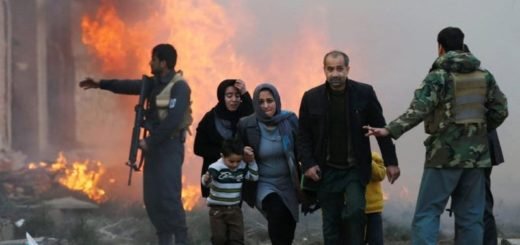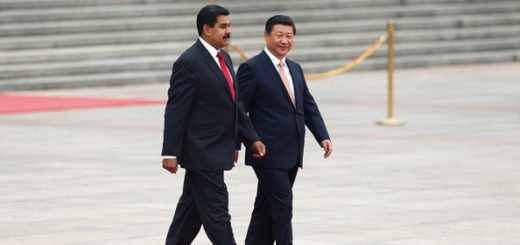Rwandan Genocide: A DarkSpot on our world history

Rwanda Map/African Monitor
Every week, news of an impending crisis or a heart-breaking tragedy grips our world. Terrorism, massacres, natural calamities, and many more chill-inducing phenomenon are wreaking havoc everywhere. One of these events in a long list of unfortunate happenings was the Rwandan Genocide. Widely believed to be one of the world’s most ghastly killings, this genocide was responsible for around a million deaths.
The Tutsi community has dominated Rwanda for a long time, even though their numbers add up to only 15% of the population. The rest of the Rwandans, a majority, consist of the Hutu community. However, in 1959, the Hutus overthrew the Tutsi rule which led to tens of thousands of Tutsi to flee into neighbouring countries, which included the nation of Uganda. The Rwandan Patriotic Front (RPF) was a rebel group formed by Tutsi people who had been exiled. This group infiltrated Rwanda in 1990, which prompted a fight between the two communities. Pressure on the Hutu government of President Juvénal Habyarimana from all over the world resulted in a cessation of hostilities in 1993, with an agreement to put into effect the Arusha Accords, which would create a power-sharing government with the RPF. This agreement was not welcome among a number of conservative Hutu, including members of the Akazu, who viewed it as conceding to enemy demands. However, a peace deal came into existence in 1993. On the night of 6 April 1994, a plane carrying then-President Juvenal Habyarimana, and Burundian President Cyprien Ntaryamira – both Hutus – was shot down, killing everyone on board. This assassination of their longest serving President saw the end of the peace treaty.
Read: Modi- First Indian Prime Minister to visit Rwanda
A crisis committee was formed in the evening of the 6th, the day the President was assassinated. It consisted of Major General Augustin Ndindiliyimana, Colonel TheonesteBagosora, and a number of other senior army staff officers. The committee was headed by Bagosora. Prime Minister Agathe Uwilingiyimana was legally next in the line of political succession, but the committee refused to recognise her authority. Roméo Antonius Dallaire, the Force Commander of UNAMIR met with the committee that night and insisted that Uwilingiyimana – or Madame Agathe, as she was sometimes referred to as – be placed in charge, but Colonel Bagosora refused, saying Madame Agathe did not “enjoy the confidence of the Rwandan people” and was “incapable of governing the nation.” Colonel Bagosora sought to convince UNAMIR and the RPF that the committee was acting to contain the Presidential Guard. UNAMIR sent an escort of ten Belgian soldiers to Prime Minister Agathe, with the intention of transporting her to the Radio Rwanda offices to address the nation. This plan was cancelled because the Presidential Guard took over the radio station shortly afterwards and would not permit her to speak on air. A number of soldiers and a crowd of civilians, later in the day, forced the Belgians guarding Uwilingiyimana to surrender their weapons. Uwilingiyimana and her husband were killed in this chaos.

The war had its origins in the long-running colonial era dispute between the Hutu and Tutsi groups within the Rwandan population/Africa Monitor
The extremists spent the night of 6–7 April moving around Kigali with lists of prominent moderate politicians and journalists, on a mission to kill them. Among those killed were President of the Constitutional Court Joseph Kavaruganda, Minister of Agriculture Frederic Nzamurambaho, Parti Liberal leader LandwaldNdasingwa and his Canadian wife, and chief Arusha negotiator Boniface Ngulinzira. Neighbours killed neighbours, destroying their properties and some husbands even killed their Tutsi wives, saying refusal to murder Tutsi would mean their certain death. Checkpoints and barricades were erected to screen all holders of the national ID card of Rwanda (which contained ethnic classification information) in order to methodically identify and kill Tutsi. These forces enlisted and pressured Hutu civilians to arm themselves with machetes, clubs, blunt objects, and other weapons to rape and maim. Thousands of Tutsi women were taken away and kept as sex slaves. Weapons and hit-lists were handed out to local groups, who knew exactly where to find their targets. The extremists set up radio stations and newspapers which broadcasted hate messages, urging the Hutu to “weed out the cockroaches” meaning kill the Tutsis. The names of those to be killed were read out on the radio. Even priests and nuns were later convicted of killing people, including some who had come to seek refuge in churches. The breakdown of the peace accords led to the RPF – backed by Uganda’s army– gradually seizing more territory, until 4 July, when its forces marched into the capital, Kigali. This brought an end to the genocide.
The United Nations (UN) and countries including the United States, the United Kingdom, and Belgium were criticized in the aftermath for their inaction and failure to strengthen the force and mandate of the UN Assistance Mission for Rwanda (UNAMIR) peacekeepers. The French, who were allies of the Hutu government, sent a force to set up a safe zone but were accused of not doing enough to stop the slaughter.
Read: Child Rights and Peacekeeping in Africa: The Security Council’s July Resolutions
Out of a population of 7.3 million people, 84% of whom were Hutu, 15% Tutsi and 1% Twa, the official figures published by the Rwandan government estimated the number of victims of the genocide to be 1,070,014 in 100 days. It is estimated that about 300,000 Tutsi survived the genocide.
*Neha Hardikar is a Research Intern at The Kootneeti


















